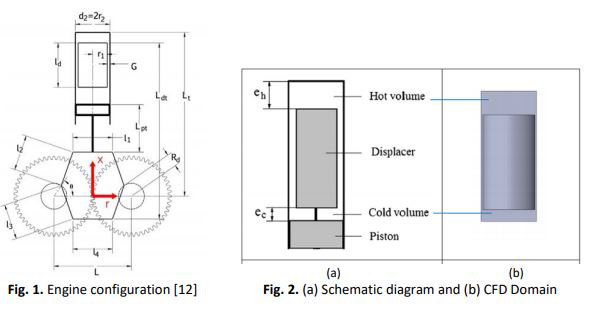Waste Heat Recovery of Biomass Based Industrial Boilers by Using Stirling Engine
DOI:
https://doi.org/10.37934/arfmts.89.1.112Keywords:
Biomass, Waste heat recovery, low temperature, work done, Stirling engineAbstract
Industrial boilers by using biomass for electricity generation have received significant attention recent years. However, during the process, a significant fraction of thermal energy is often lost to the environment as flue gas. The exhaust flue gas heat loss which ranges from 150-180°C (423.15-453.15K) has led to discovery of importance of recovering the waste heat of the flue gas to overcome the reliance on fossil fuel. Stirling engine as an external combustion engine with high efficiencies and able to use any types of heat source is the best candidate to recover waste heat of the exhausted gas by converting it into power. Thus, in this study Stirling engine was introduced in order to evaluate the possibility of recovering waste heat from industrial boilers to produce power. For this reason, Computational Fluid Dynamic (CFD) simulation test was performed to design an initial computational model of Stirling engine for low temperature heat waste recovery. The CFD model was validated with the experiment model and shows 4.3% of deviation. The validated model then connected to a lower temperature. It shows that when the heat source is 400K, the work done by the engine is 8.4J compared to when heat source 773K the work done is 17.0 J. The computational model can be used to evaluate the performance of Stirling engine as waste heat recovery of biomass-based industrial boilers for low-grade temperature heat source.
Downloads
































